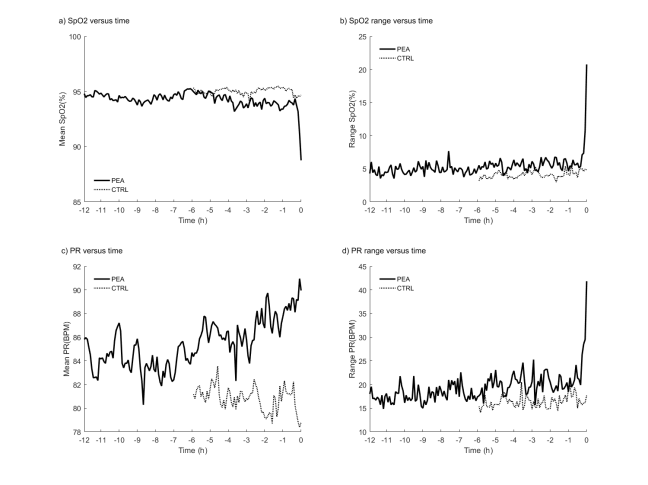This study was undertaken in an effort to explore methods of detecting patient deterioration using continuous monitoring in the general care setting. Retrospective analysis of SpO2 and pulse rate data, derived from continuous pulse oximetry, was performed for pulseless electrical activity (n = 38) and control (n = 42) patient cohorts.
Results indicated that:
- The pulseless electrical activity arrest group tended to have lower mean SpO2 and higher mean pulse rate values than the control group.
- SpO2 and pulse rate variability was higher in the pulseless electrical activity arrest cohort.
- Changes in variability were observed beginning several hours before the rescue event. Up to 20 minutes before rescue events, pulse rate features significantly differed from feature values for the preceding 30-min interval (> 10% difference in mean, > 46% difference in range).
- Similar results were found for SpO2 features 10 minutes before the event (> 4% difference in mean, > 60% difference in range).
This study indicates a significant difference in SpO2 and pulse rate features derived from continuous pulse oximetry between pulseless electrical activity and control groups. In practice, integrating automated feature calculation and clinician notification into clinical monitoring and information systems may increase patient safety by supporting the early detection of such events.
S. P. McGrath, I. M. Perreard, T. MacKenzie, and G. T. Blike, “Patterns in continuous pulse oximetry data prior to pulseless electrical activity arrest in the general care setting,” J Clin Monit Comput, Apr. 2020, doi: 10.1007/s10877-020-00509-8.
